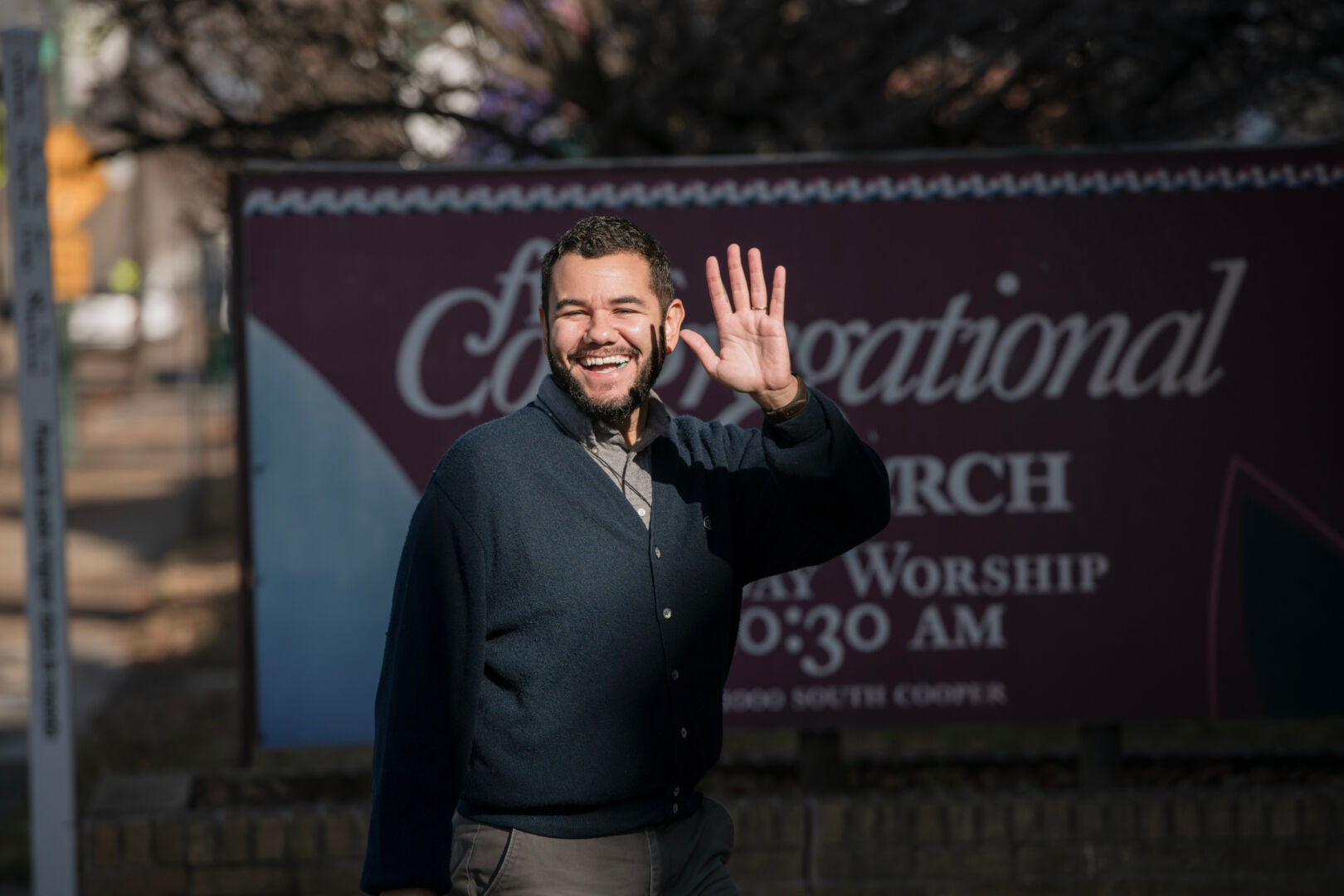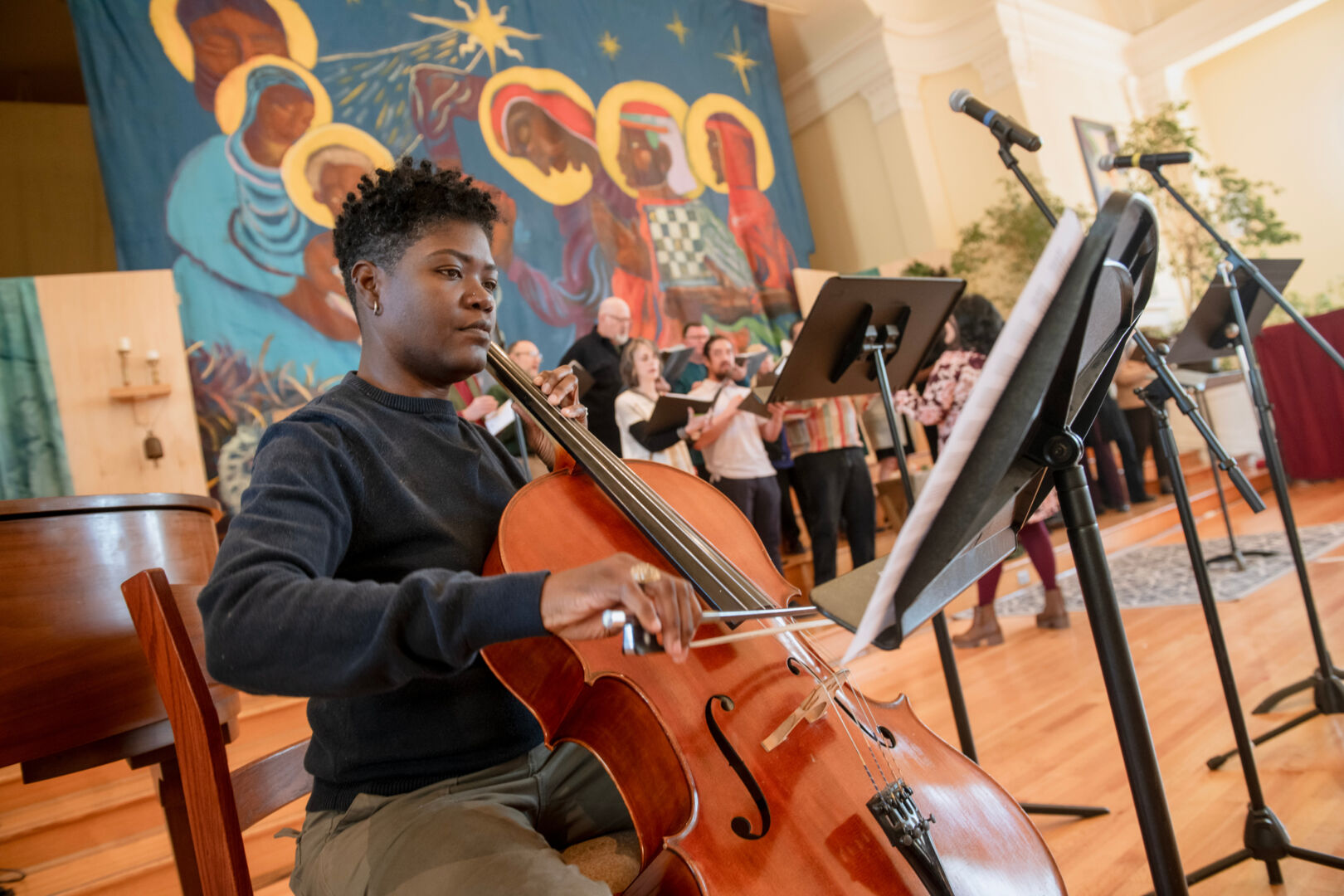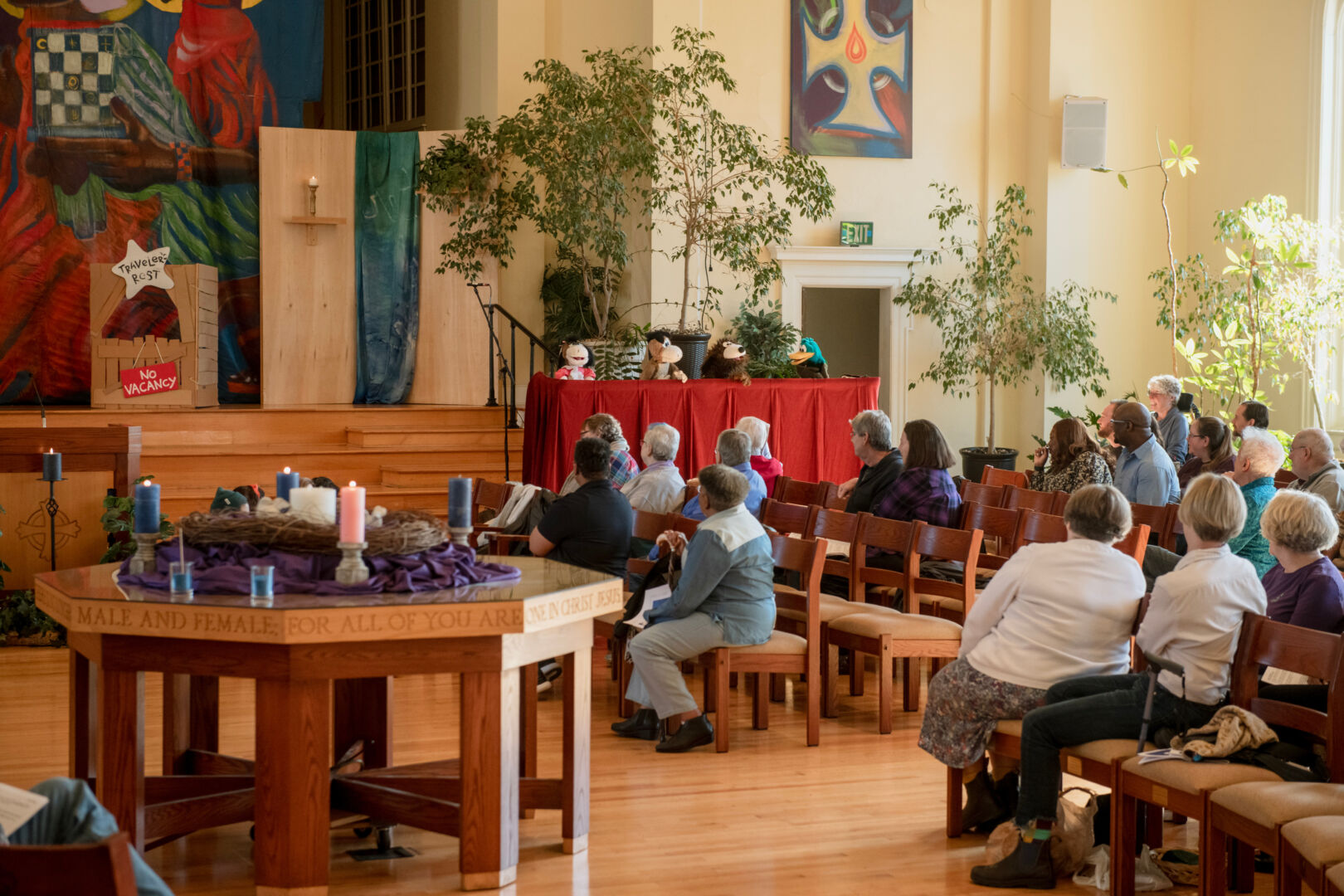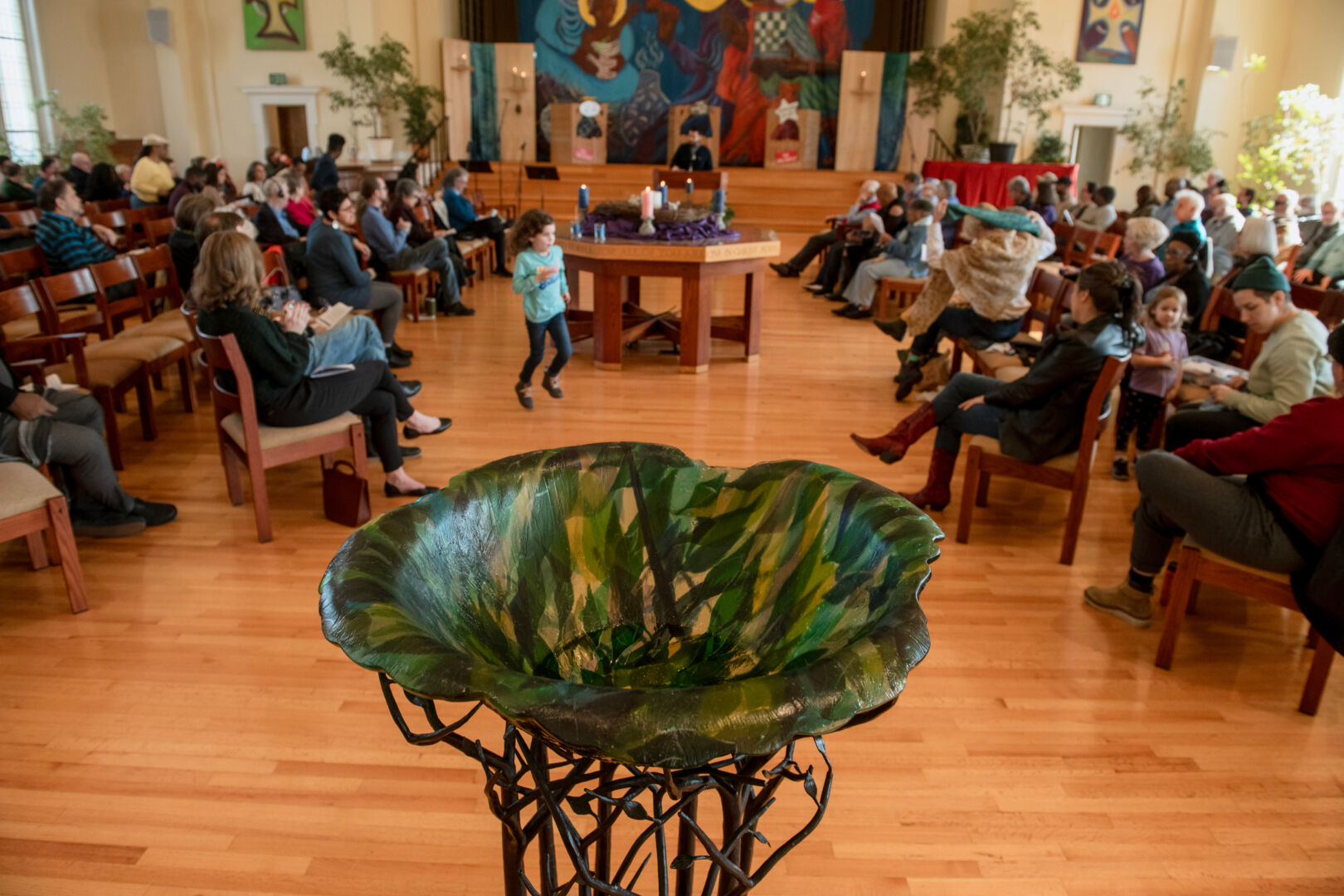Meet Tony Coleman | Pastor and Teacher

We had the good fortune of connecting with Tony Coleman and we’ve shared our conversation below.
Hi Tony, is there something that you feel is most responsible for your success?
As a church pastor in the 21st century, one of the most critical questions I confront on a regular basis is “what is church for?” Some folks think of church as a container – a place that holds memories or rituals or, even, God. Other folks think of it as a school where people learn how to be followers of Jesus – whatever that may mean. For me, though, and for the people who have shaped First Congo into the creative and justice-oriented community that it is, church is about enabling people to live out their deepest callings and the biggest dreams. It’s about making space to see what people can do when they get together and center Love as their highest value. That factor, in and of itself, clears away so much of the baggage that too often accompanies church, and that factor, I believe, is what helps our funky, hippy-dippy, wild, diverse, and sometimes clumsy community draw folks in.


Let’s talk shop? Tell us more about your career, what can you share with our community?
My journey into church work was twisty, topsy, and turvy.
Some of my colleagues grew up attending the church that their parents attended, which happened to be the very same church that their grandparents attended, and their great-grandparents attended, too. While some pastors’ roots in church run deep and wide, that was not the case for me. The first church I ever attended was a small, Southern Baptist congregation in Memphis, and the only reason I went was that the church bus cruised through the apartment complex where I lived and picked me up (with, I assume, my mother’s consent).
What I discovered there was a beautiful, family-feeling community of people who smiled a lot. They called each other “Sister” and “Brother.” They sang songs and played games with me. They talked of miracles and the love of a God who was everywhere and in everything. As a little boy living in a small family that argued a lot, I was enamored.
Before long, when I was 8 or 9, I decided that I wanted to be baptized. That was the first Sunday that my parents came to the church. They weren’t exactly fans of organized religion, but, nevertheless, they offered lukewarm approval of my enthusiasm and came to see me get baptized. After the service, they lingered in the sanctuary and awkwardly mingled with the other congregants. When they met the pastor, he invited himself over to our apartment, and my parents braced themselves for what they assumed would be one more sales pitch from one more Southern preacher. Instead, what they got, after the pastor arrived and sat down with them and whipped out his King James Bible was a lecture on why interracial relationships, relationships like theirs, were sacrilegious. Needless to say, that Sunday was my last at that church.
That episode confirmed my parents’ skepticism and suspicion of organized religion. That pastor left me well acquainted with one of the weapons (i.e. race) churches wield to deeply hurt people who trust them. And, still, that episode robbed me of a community I had come to love.
I longed for the sense of intimacy and care I had come to know in church. I longed for the connection with other people and, though I didn’t know what it was or what it meant, I longed for a deeper connection with God. And so, I went looking. I started going to church with friends when I could. I convinced my parents, every now and then, to try out this church or that one. I went to sleepy, hymn-singing, organ-playing, all-white churches, and I went to upbeat, tambourine-smacking, speaking-in-tongues Black churches. I went to backwoods country churches, and I went to urban mega churches.
Everywhere I went, though, felt off. I struggled to find a place that fit, or, rather, a place where I fit. Not only was I biracial, but I was also coming into a clearer awareness of my sexuality. Finding a spiritual community that was spacious enough for the whole truth of who I was felt, at times, an impossible task.
Still, I kept searching and decided in my late teens to search outside the confines of Christian spiritual communities. I visited synagogues and mosques. I went to Buddhist meditation centers and yoga retreats. I kept reading and praying and meditating and talking and studying. When I went to college, I kept the search up.
Finally, in my senior year, I visited the big white-steepled Congregationalist church that sat in the middle of the tiny Massachusetts town where I went to college. To my surprise, surrounded by people who were three times my age or older, I started to find home. Or, rather, I started to feel like I could make home. While we were different from one another in every conceivable way, what we had in common was a set of values and a deep longing to learn how to, not only help, but also how to love the world. I learned, in other words, what I believe – to this day – is the purpose of spiritual community. That lesson set me on a path to divinity school, and that path led me to a whole variety of places – from kindergarten classrooms to art museums to law school to all kinds of churches and to, finally, the vibrant, creative, love-affirming community, First Congo, where I am now.
Any places to eat or things to do that you can share with our readers? If they have a friend visiting town, what are some spots they could take them to?
I’d start outside, in downtown Memphis, at the river. One of my favorite views of the city is from the middle of the Big River Crossing footbridge. With the wide expanse of the Mississippi river roiling beneath you and the city’s many buildings and trees before you, it’s just beautiful. Also, walking that footbridge is a joy in and of itself, particularly if you’re a nerd like me who takes some pleasure in knowing that you’re “walking from one state to another” as you make the your way from the TN shores of the river to the AR riverbanks.
From there, we’d get a snack at the Vice and Virtue coffee shop, located in the Arrive Hotel – coffee, pastries, and decor are all a treat. Then, we’d walk on over to the National Civil Rights Museum. Along the way, I would talk to you about the museum’s history, and, also, I’d make sure to point out the woman tabling right at the intersection of one of the side streets, a woman who’s been there in protest for years, because she believes that the funds dedicated to preserving the museum should be invested in Memphis’s poor communities of color – a way of allocating resources that, she believes, is a better way to live out Dr. King’s vision.
We’d have to go by Arcade and Huey’s at some point along the trip. We’d stop over in Crosstown to look at what committed, creative people can do to a run-down and mostly forgotten building. We’d go to Bass Pro Shops for a similar reason and, because, it isn’t everyday that you can find burgers, bowling, and enormous live fish in a single building. We’d go to Midtown and eat some places down there – Tsunami, for sure. We’d check out Burke’s Books, one of my favorite (and one of the only) used bookstores in the city. And, of course, we’d go by First Congo and look at all of the interesting, beautiful things going on there from the Food Justice Ministry to the hostel to the bikeshop to the space where we hope to have pickleball soon!
The Brooks Museum would be on our list, as would be Tuyen’s Asian Bistro. The list could and would go on!
Shoutout is all about shouting out others who you feel deserve additional recognition and exposure. Who would you like to shoutout?
Cheryl Cornish


Website: www.firstcongo.com
Instagram: https://www.instagram.com/firstcongomemphis/
Facebook: https://www.facebook.com/firstcongomemphis/
Image Credits
Brandon Dill
